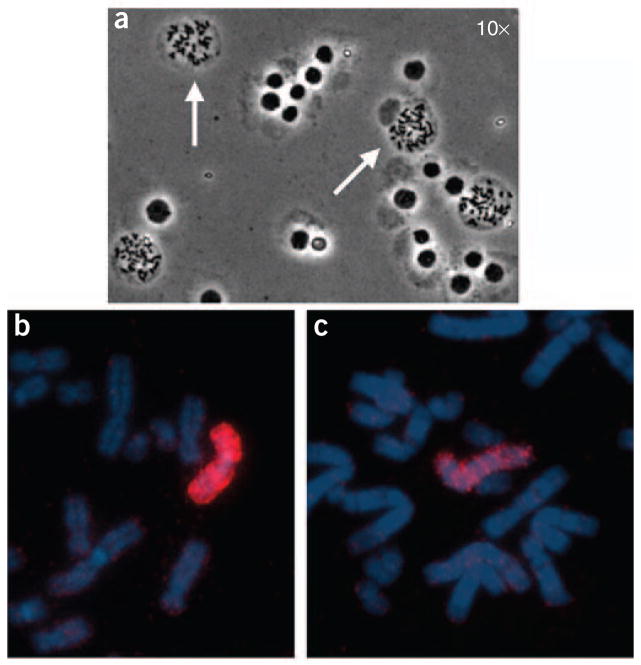Figure 2.
Effects of humidity and removal of excess cytoplasm by slide pretreatment on hybridization efficiency. (a) When cells are not kept in the hypotonic solution for enough time, the chromosomes become trapped inside the cytoplasm (white arrows). Altering the humidity at which the metaphase preparation is dropped onto the microscope slide may sometimes alleviate this problem; otherwise, hybridization efficiency will be compromised. (b) When normal human metaphase spreads are pretreated with pepsin and hybridized with a whole chromosome paint probe labeled with tetramethyl rhodamine isothyocyanate (TRITC), the hybridization will be successful. (c) Here, a whole chromosome paint-labeled with TRITC was hybridized to a different normal human metaphase spread and the slide was not pretreated with pepsin. Note the weaker intensity of the hybridization signal (red color).

